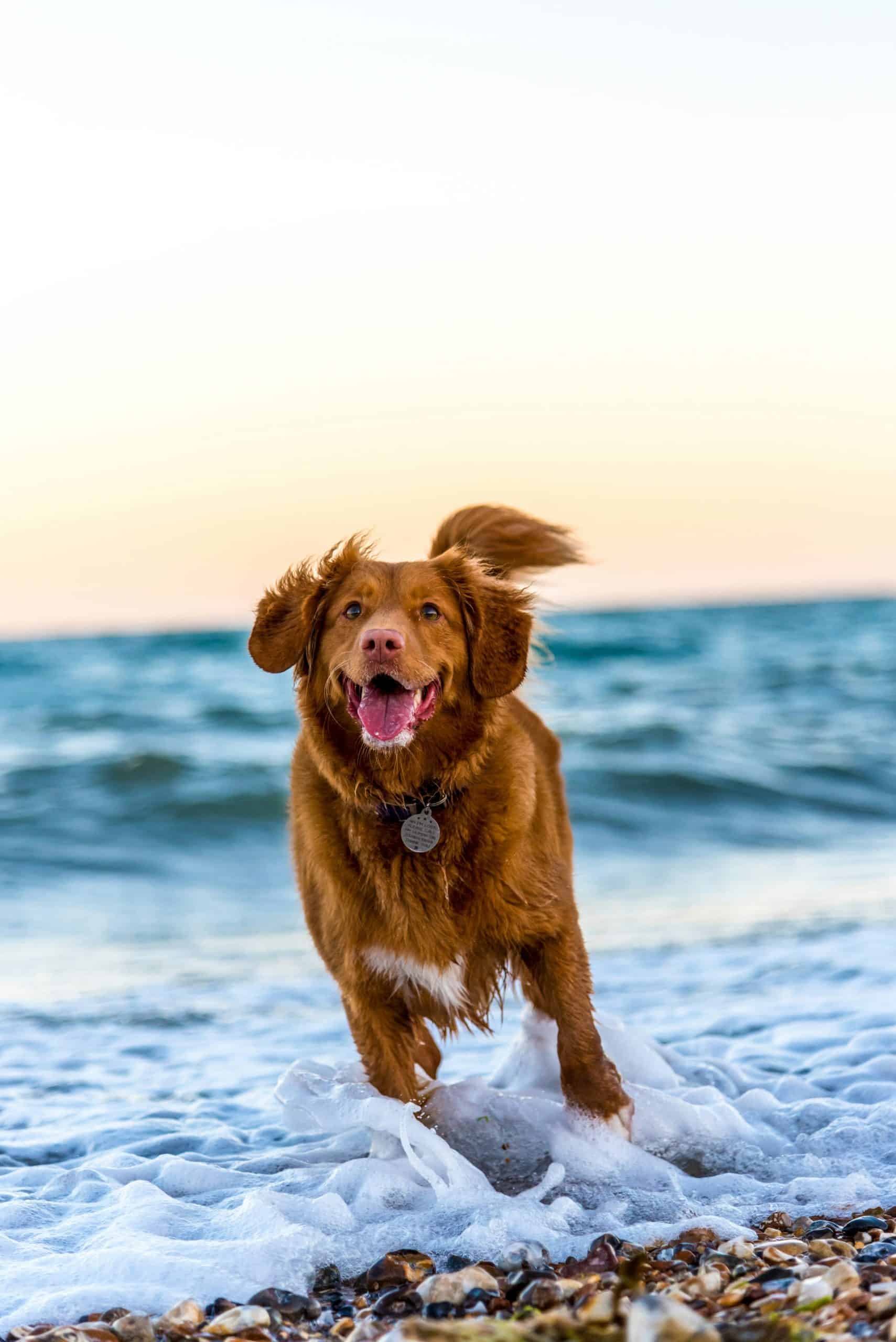Imagine this scenario: you're taking a peaceful stroll with your furry companion in the park, when suddenly, your dog starts choking on a bone. Panic sets in as you realize you don't know what to do in this emergency situation. Don't worry, we've got you covered. In this article, you'll find essential emergency first aid tips specifically tailored for dog owners. From handling injuries to preventing choking hazards, we'll provide you with the knowledge and confidence to keep your furry friend safe and healthy in unforeseen circumstances. So, let's get started and ensure that you're prepared for any emergency situations that may arise.
Cuts and Wounds

This image is property of images.unsplash.com.
Assessing the wound
When it comes to assessing cuts and wounds on your dog, it's essential to approach the situation calmly and carefully. Start by ensuring your own safety, as an injured dog may act unpredictably. Next, take a moment to evaluate the wound. Look for signs of bleeding, the depth of the cut, and any foreign objects that may be trapped within the wound. Remember to never touch the wound directly, especially if you suspect it may be deep or contaminated.
Cleaning the wound
Once you've assessed the wound, it's crucial to clean it thoroughly to prevent infection. Begin by rinsing the area gently with lukewarm water or a veterinarian-approved antiseptic solution. Avoid using harsh chemicals or hydrogen peroxide, as they can delay the healing process and cause tissue damage. After cleaning the wound, you may need to trim the surrounding hair to expose the injury fully. If the wound is deep or requires stitches, it's best to seek veterinary assistance.
Applying pressure to stop bleeding
If the wound is bleeding, applying pressure is the next step to control and minimize the bleeding. Using a clean cloth or sterile gauze, apply firm pressure directly to the affected area for several minutes. This pressure helps promote the blood clotting process. It's important to be patient and maintain steady pressure, even if the bleeding does not immediately stop. If the bleeding persists or is severe, contact your veterinarian immediately for further guidance.
Choking
Signs of choking
Choking can be a frightening experience for both you and your furry friend. It's crucial to recognize the signs of choking to act quickly and effectively. Common signs of choking in dogs include difficulty breathing, pawing at the mouth, excessive drooling, and a distressed or panicked expression. Additionally, your dog may make choking or gagging sounds, have a bluish tint to the tongue or gums, or display signs of distress. Stay calm and focused, as your dog will depend on your assistance.
Performing the Heimlich maneuver
If you suspect your dog is choking, it's important to perform the Heimlich maneuver promptly. Start by standing behind your dog, making a fist with one hand, and placing it just below their ribcage. Use your other hand to support their rear end and apply upward pressure with quick, firm thrusts. This action aims to dislodge the object causing the obstruction. Remember to always use caution and avoid applying excessive force, as it may cause injury. If the choking persists, seek veterinary help immediately.
Checking and removing foreign objects
After performing the Heimlich maneuver, carefully check your dog's mouth to identify and remove any visible foreign objects. If you can see the object and can safely remove it, gently grasp it with your fingers or a pair of tweezers and extract it from your dog's mouth. However, if the object is not easily accessible or you're unsure about removing it yourself, it's crucial to seek veterinary assistance. Attempting to remove a lodged object without proper training may worsen the situation and cause harm.
Poisoning
Recognizing poisoning symptoms
Suspecting your dog has been poisoned can be a distressing situation. It's essential to be vigilant and recognize the symptoms of poisoning to act swiftly. Common signs of poisoning in dogs include vomiting, diarrhea, difficulty breathing, excessive salivation, seizures, weakness, and abnormal behavior. Additionally, you may notice dilated pupils, loss of appetite, or unusual smells on your dog's breath or within their surroundings. If you suspect poisoning, do not attempt to diagnose the toxin yourself. Contact your veterinarian immediately for guidance.
Calling the vet
If you suspect your dog has been poisoned, time is crucial. Contact your veterinarian or an animal poison control hotline immediately for professional guidance. They will typically ask for information about the suspected poison, your dog's symptoms, and your dog's weight to provide accurate advice. Avoid inducing vomiting or administering any type of treatment without proper veterinary guidance, as certain toxins can cause further harm if handled incorrectly. Prompt veterinary assistance is essential in cases of poisoning.
Inducing vomiting
In some cases, inducing vomiting may be required as an emergency measure until you can reach veterinary care. However, it's important to note that not all toxins should be treated with vomiting. Do not induce vomiting if your dog is unconscious, seizing, has ingested a caustic substance, or is already vomiting. If you've received professional guidance to induce vomiting, hydrogen peroxide is commonly used. The recommended dosage is usually one teaspoon per ten pounds of body weight, up to three tablespoons. Always consult your veterinarian before inducing vomiting to ensure it's the appropriate course of action.
Heatstroke
Identifying heatstroke signs
Heatstroke is a life-threatening condition for dogs, especially during hot summer months. It's crucial to recognize the signs of heatstroke early to provide immediate assistance. Some common symptoms of heatstroke in dogs include excessive panting, difficulty breathing, rapid heartbeat, drooling, weakness, seizures, and collapse. You may also notice dark red gums, vomiting, diarrhea, or disorientation. If you suspect heatstroke, it's important to act quickly to prevent further complications.
Moving to a cool place
If your dog is displaying signs of heatstroke, it's crucial to move them to a cool and shaded location immediately. Direct sunlight can exacerbate the symptoms, so find a shaded area or bring your dog indoors if possible. Use fans, air conditioning, or open windows to improve airflow around your dog and help lower their body temperature. Providing access to fresh water is also important during this time. Avoid using ice-cold water or submerging your dog in cold water, as it may cause rapid cooling and further complications.
Lowering body temperature
Lowering your dog's body temperature is vital in cases of heatstroke. However, it's important to approach this step cautiously to prevent shock or other complications. Wetting your dog with cool (not cold) water and using damp towels on their neck, underarms, and groin area can help facilitate the cooling process. Additionally, you can use a fan or breeze to aid in evaporation and heat dissipation. Monitor your dog's temperature closely, aiming for gradual cooling rather than a sudden drop. Once stable, seek veterinary care to ensure your dog has fully recovered.
Fractures and Broken Bones

This image is property of images.unsplash.com.
Determining a fracture
If you suspect your dog has a fracture or broken bone, it's essential to handle the situation with care. Look for signs such as sudden lameness, swelling, deformities, or an unwillingness to bear weight on the affected limb. Your dog may also exhibit signs of pain when the area is touched, or they may be reluctant to move or engage in normal activities. If you suspect a fracture, it's best to avoid unnecessary movement and seek immediate veterinary assistance to minimize pain and prevent further injury.
Stabilizing the bone
Before transporting your dog to the veterinarian, stabilizing the broken bone is crucial to prevent any additional damage. You can immobilize the limb by creating a splint or wrapping it gently with a soft material such as a towel, blanket, or clothing. Take care not to apply excessive pressure or restrict blood circulation. Secure the splint using bandages or tape, ensuring it's snug but not too tight. Keep in mind that splinting is a temporary measure, and professional veterinary care is necessary for proper treatment and follow-up.
Transporting the dog to the vet
Once you've stabilized the broken bone, it's essential to transport your dog to the veterinarian as soon as possible. If possible, enlist the help of another person to prevent movements that might worsen the injury during transportation. Use a stretcher, a large flat board, or a firm surface to support your dog's body and injured limb. Be gentle and cautious during the process, avoiding any sudden or jerky movements. Once your dog is safely secured, proceed to the veterinary clinic for a thorough examination and professional treatment.
Seizures
Creating a safe environment
Seizures are a frightening experience for both dogs and their owners. When your dog is having a seizure, it's important to create a safe environment to minimize potential harm. Remove any nearby objects that may pose a danger to your dog, such as furniture, sharp edges, or stairs. Clear the immediate area to provide your dog with enough space. Additionally, make sure there are no obstructions around their mouth or airway that could hinder their breathing. Stay calm and avoid restraining your dog, as this can increase anxiety and potential injury.
Keeping track of seizure duration
During a seizure, it can be helpful to keep track of its duration. While seizures may seem to last an eternity, most are over within a few minutes. However, it's crucial to monitor the duration as longer seizures can lead to more serious complications. Start a timer and note the time when the seizure begins. Continue observing your dog's behavior and body movements until the seizure stops. If the seizure lasts longer than five minutes or if multiple seizures occur within a short period, immediate veterinary assistance is necessary.
Seeking veterinary assistance
After the seizure has ended, it's important to seek veterinary assistance for your dog. Even if your dog has experienced seizures before, each episode should be evaluated by a veterinarian. Your veterinarian will perform a thorough examination, evaluate the possible causes, and recommend further diagnostic tests if necessary. Based on the findings, appropriate treatment plans or medications may be prescribed to manage your dog's seizures effectively. Regular follow-ups with your veterinarian will help monitor your dog's condition and adjust the treatment plan accordingly.
Bleeding

This image is property of images.unsplash.com.
Applying direct pressure
When your dog is bleeding, applying direct pressure is the initial step to control the bleeding and prevent excessive blood loss. Use a clean cloth or sterile gauze to apply firm pressure directly to the wound. Maintain this pressure for several minutes to allow blood clotting to occur. If the initial cloth becomes soaked with blood, apply an additional layer of cloth on top, without removing the soaked one. Remember, consistent pressure is essential and may take some time to be effective.
Elevating the bleeding area
In certain cases, elevating the bleeding area can help reduce blood flow and assist in controlling the bleeding. If possible, elevate the injured limb above the level of your dog's heart. This technique can be particularly useful in situations where the bleeding is originating from a limb or extremity wound. However, keep in mind that not all situations will permit elevation, and it's essential to prioritize the safety and comfort of your dog throughout the process.
Using a tourniquet as a last resort
Using a tourniquet should only be considered as a last resort when all other methods fail to control severe bleeding. Applying a tourniquet involves wrapping a belt, strap, or fabric tightly around the affected limb, between the wound and the heart. However, it's crucial to exercise extreme caution when using a tourniquet, as it can cause further damage if applied incorrectly or left in place for an extended period. It should only be used in situations where you have no immediate access to veterinary care and where the risk of fatal blood loss is imminent.
Burns
Evaluating burn severity
When it comes to assessing burns on your dog, understanding the severity is essential for appropriate treatment. Burns are classified into three main categories: first-degree, second-degree, and third-degree burns. First-degree burns are the mildest, characterized by superficial redness, pain, and no blistering. Second-degree burns involve deeper tissue damage, with blisters, redness, swelling, and moderate to severe pain. Third-degree burns are the most severe, often causing charred or discolored skin, and can be painless due to nerve damage. Seek veterinary care for all but the most minor burns.
Cooling the burn
If your dog suffers from a burn, it's important to cool the affected area to prevent further tissue damage and alleviate pain. Use cool (not cold) water to flush the burn gently for about 10-15 minutes. Avoid using ice or very cold water, as it may worsen tissue damage. You can also soak a clean cloth or towel in cool water and gently apply it to the burn. However, never use adhesive dressings or apply ointments, creams, or oils to the burn before obtaining veterinary advice.
Covering the burn with a sterile dressing
Once you've cooled the burn, covering it with a sterile dressing can help protect the wound and prevent contamination. Use a non-stick dressing or a clean, non-fluffy cloth to cover the burn. Secure the dressing in place using a self-adhesive bandage or non-adhesive medical tape. Be careful not to wrap it too tightly, as it can impair circulation or hinder the healing process. Seek veterinary assistance as soon as possible to ensure your dog receives the proper treatment and guidance for burn management.
Allergic reactions
Recognizing allergic reaction signs
Allergic reactions in dogs can occur due to various causes such as insect bites, food allergies, or exposure to certain medications or substances. Identifying the signs of an allergic reaction is essential for timely intervention. Symptoms may include skin redness or rash, itchiness, hives, swelling (particularly around the face or throat), difficulty breathing, vomiting, diarrhea, or collapse. It's important to be vigilant and consult your veterinarian to determine the cause of the allergic reaction and receive appropriate treatment.
Administering antihistamines
If your dog experiences a mild allergic reaction, your veterinarian may recommend administering antihistamines as a first response. However, it's crucial to seek professional guidance before administering any medication. The appropriate antihistamine dosage depends on your dog's weight, and certain antihistamines are suitable for dogs, while others should be avoided. Follow your veterinarian's instructions carefully and monitor your dog for any adverse effects or changes in their condition. Remember, antihistamines may not be sufficient for severe allergic reactions, and immediate veterinary care is required.
Monitoring the dog's condition
After an allergic reaction, it's important to monitor your dog's condition closely. Keep an eye out for any signs of worsening symptoms or the development of new symptoms. If your dog's condition deteriorates or if they are experiencing difficulty breathing, excessive swelling, or collapse, it's crucial to seek immediate veterinary attention. Allergic reactions can be unpredictable and progress rapidly, so prompt medical intervention is vital to ensure your dog's safety and well-being.
Eye injuries
Avoiding further damage
Eye injuries in dogs can range from minor irritations to more severe trauma. If your dog has sustained an eye injury, it's important to approach the situation carefully to prevent further damage. Avoid touching or rubbing the eye, as it can exacerbate the injury or introduce bacteria. Encourage your dog to keep their eye closed, and if possible, place an Elizabethan collar or a soft cone around their neck to prevent them from scratching or pawing at the injured eye. Immediate veterinary care is necessary for all eye injuries.
Flushing the eye
In some cases, you may be able to flush your dog's eye before seeking professional help, particularly if the injury seems minor. Use a sterile saline solution or clean water to gently flush the eye. Position your dog's head under a faucet or use a gentle stream of water from a clean container to flush out any debris or irritants. However, never attempt to remove any objects embedded in the eye or administer any medication without veterinary guidance. Flushing the eye should only be a temporary measure until you can reach veterinary care.
Seeking immediate veterinary care
Eye injuries should always be treated as emergencies, and immediate veterinary care is crucial. Even seemingly minor injuries can lead to serious complications if left untreated. Your veterinarian will conduct a thorough examination, evaluate the extent of the injury, and determine the appropriate treatment. Eye injuries may require specialized knowledge and equipment for proper assessment and treatment. The sooner you seek veterinary care, the better the chances of preserving your dog's vision and ensuring a successful recovery.
Remember, while these first aid tips can be helpful in times of emergency, they are not substitutes for professional veterinary care. Always seek guidance from a veterinarian for proper diagnosis, treatment, and follow-up care for your beloved furry companion. By being prepared and equipped with the knowledge to handle emergencies, you can potentially save your dog's life and provide them with the best possible care.


